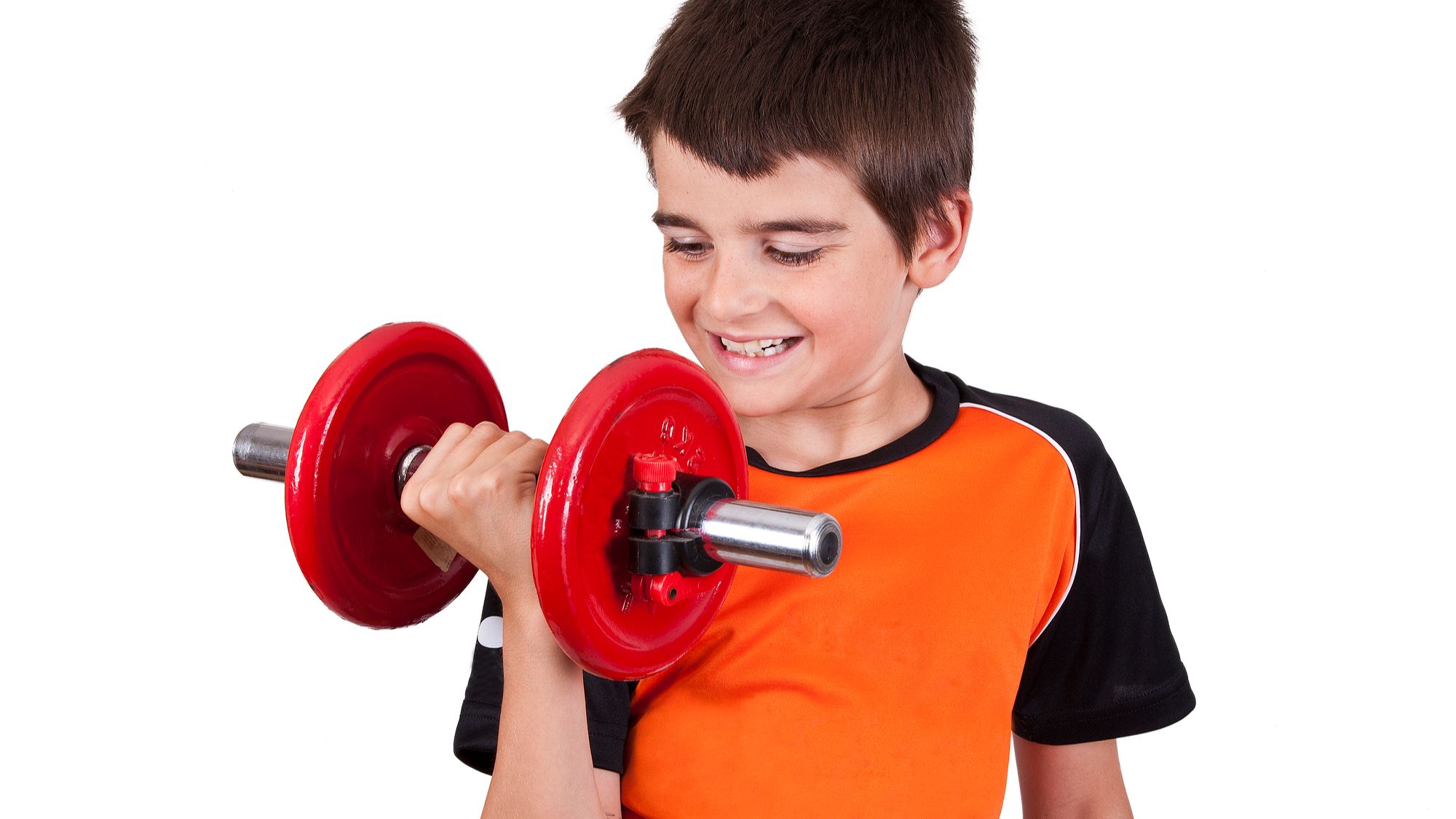Too Young To Lift?

Hi Dr. Bell, my dad doesn’t want me weightlifting because I’m young and it will stunt my growth. What can I tell him to change his mind? Thanks in Advance, Lawson.
Dear Lawson,
If you are old enough to write this most excellent question, you are old enough to begin a weight-lifting conditioning program. I recommend every child begin strength training as soon as they are old enough to understand and follow directions.
Important Clarification: Weight-lifting as Strength Conditioning is performed at far lower intensities than Competitive Lifting. High Intensity requires higher risk than Strength Conditioning which typically uses 8-20 RM Sets as opposed to 1-5 RM sets performed by Competitors. RM = Repetition Maximum: The Maximum weight (Load) needed to complete a Set at the designated amount of Reps, i.e.: 8 RM is 8 Reps to failure; 20 RM = 20 Reps to failure!
Therefore I DO NOT RECOMMEND any competitive weight training: Powerlifting, Olympic lifting, or Bodybuilding post-pubescence for the reasons that have become mythological in weight-lifting: “Children should not lift weights because it will stunt their growth!”
Though there is actually no evidence that weightlifting has ever stunted anyone's growth, it is always best to err on the conservative side and keep the Intensity no more than 8 RM with the majority of your training in the 15-20 RM Range.
The exact origin of this myth is subject to opinion, but the factual basis of this myth is that weight-lifting can damage the epiphyseal plate in the long bones. This is also referred to as the “Growth Plates.” If traumatic damage occurs to a Growth Plate, all growth could stop. This damage has occurred in many sports: gymnastics, football, track & field, soccer, running, basketball, volleyball, martial arts, and almost every other sport…except…weight-lifting!
Equally surprising to those who have heard this popular myth, studies show that weight-trained young athletes experience fewer growth plates and other injuries when compared to their non-weight-trained peers.
The lower injury rates are attributed to the fact that not only are weight-trained athletes stronger; their skeletal structures are able to withstand greater impact forces. It has also been shown that young strength-trained athletes also benefit from increased speed, strength, power, agility, balance, and coordination when compared to their untrained peers.
There are many more benefits of using strength training as a primary conditioning mode for young athletes. These benefits are provided in great detail in the IFPA Youth Fitness Instructor Certification. Safety is of paramount importance and many of the IFPA Safety Guidelines emphasize:
1) Focusing on perfecting technique first and foremost. To maximize safety and optimize effectiveness, you need to learn perfect form. Perfect form is attained by rigid adherence to the IFPA Key Teaching Points for every exercise.
2) Learning each exercise “Unloaded” with little or no resistance until the technique is mastered.
3) Proper supervision and safety adherence is required at all times.
4) Your Program Design must plan on training all major muscle groups as well as the core muscular skeleton in symmetry.
5) Don’t lift too fast. Children/ Young Athletes have shorter limbs so the typical “2-4 second” system recommended for adult beginners will be “boringly tedious” for a child/young athlete, but do not let them perform rapid/explosive movements as they opt to do.
6) Always begin with a warm-up (10-15 minutes) and always end with a good cool-down (10-15 minutes)
7) Never lose sight of the fact that strength is merely one of the 12 IFPA Components of Fitness: Strength, Speed, Power, Anaerobic and aerobic Endurance, Agility, Balance, Coordination, Flexibility, Body Composition, Symmetry and Biochemical Balance. You must develop yourself to become fit and healthy or to compete safely and effectively, all 12 components must be developed in balance.
8) You must make it fun. Young athletes should learn first and foremost that getting in shape and staying in shape is fun. What should be a myth is the way most of my generation of athletes was training in “the old days” by sadist coaches who would yell, “If it doesn’t hurt, you’re doing it wrong!”…or…”No pain, No gain!”
Training for young athletes must be about a lifetime of a fit and healthy lifestyle…and it must be fun to develop the fitness habits in a young athlete.
In conclusion: strength training can have a positive benefit to every physiological and psychological aspect of every young athlete, but the training must be conducted safely and effectively.

